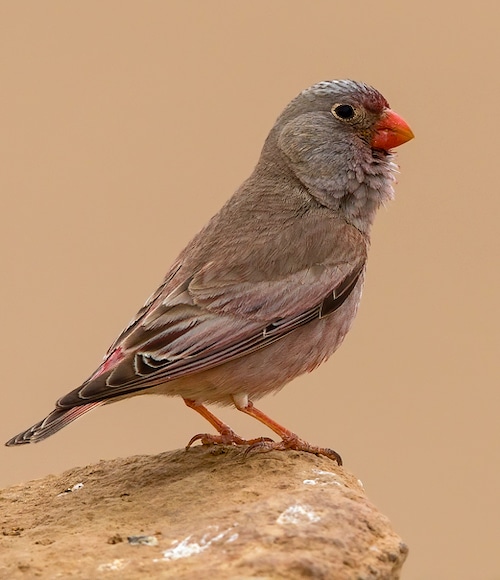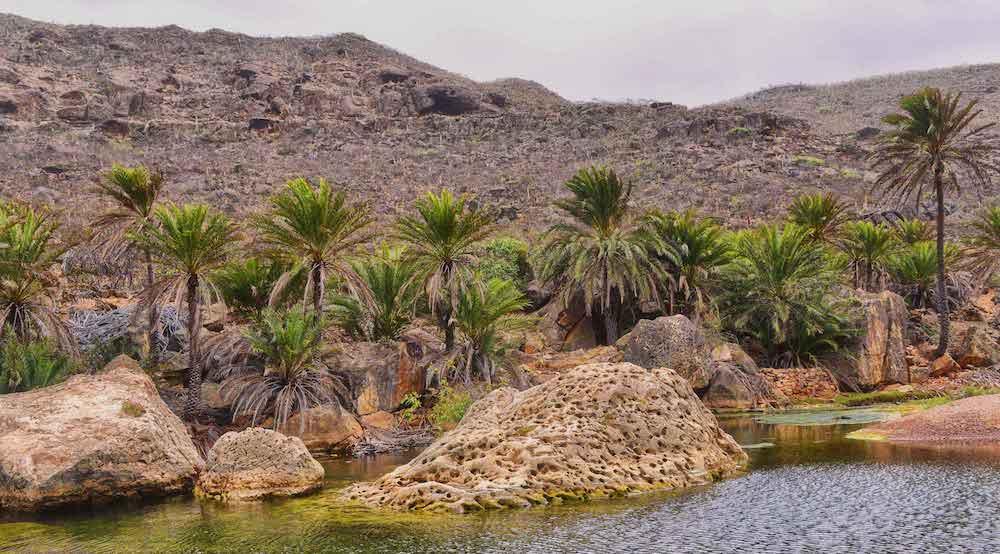Republic of Yemen

Yemen, officially the Republic of Yemen is an Arab country located on the Arabian Peninsula in Southwest Asia. Yemen has a population of more than 35 million people and is bordered by Saudi Arabia to the North, the Red Sea to the West, the Arabian Sea and Gulf of Aden to the South, and Oman to the east. Yemen’s territory includes over 200 islands, the largest of which is Socotra, about 415 kilometres (259 miles) to the south of Yemen, off the coast of Somalia. Yemen is the only republic on the Arabian Peninsula.
At nearly 528,000 km² (204,000 square miles), Yemen is the world’s 49th-largest country (after France). It is comparable in size to Thailand, and somewhat larger than the US state of California. A number of Red Sea islands, including the Hanish Islands, Kamaran and Perim, as well as Socotra in the Arabian Sea belong to Yemen. Until recently, Yemen’s northern border was undefined because the Arabian Desert prevented any human habitation there. The country can be divided geographically into four main regions: the coastal plains in the west, the western highlands, the eastern highlands, and the Rub al Khali in the east. The Tihamah (“hot lands”) form a very arid and flat coastal plain. Despite the aridity, the presence of many lagoons makes this region very marshy and a suitable breeding ground for malarial mosquitoes. There are also extensive crescent-shaped sand dunes. The evaporation in the Tihama is so great that streams from the highlands never reach the sea, but they do contribute to extensive groundwater reserves. Today, these are heavily exploited for agricultural use. Near the village of Madar about 48km North of Sanaa dinosaur footprints have been found, indicating that the area was once a mud flat.
The Tihamah ends abruptly at the escarpment of the western highlands. This area, now heavily terraced to meet the demand for food, receives the highest rainfall in Arabia, rapidly increasing from 100 mm (4 inches) per year to about 760 mm (30 inches) in Ta’izz and over 1,000 mm (40 inches) in Ibb. Agriculture here is very diverse, with such crops as sorghum dominating. Cotton and many fruit trees are also grown, with mangoes being the most valuable. Temperatures are hot in the day but fall dramatically at night. The central highlands are an extensive high plateau over 2,000 metres (6,560 feet) in elevation. This area is drier than the western highlands because of rain-shadow influences, but still receives sufficient rain in wet years for extensive cropping. Diurnal temperature ranges are among the highest in the world: ranges from 30 °C (86 °F) in the day to 0 °C (32 °F) at night are normal. Water storage allows for irrigation and the growing of wheat and barley. Sana’a is located in this region. The highest point in Yemen is Jabal an Nabi Shu’ayb, at 3,666 meters (12,028 ft).The Rub al Khali in the east is much lower, generally below 1,000 metres, and receives almost no rain. It is populated only by Bedouin herders of camels.
Birding the Yemen
Currently, (2024) and for the last decade and more, a civil war has raged in Yemen. At times it has been full scale, and at other times simmering. ‘Rebel’ forces hold territory in the south and have sought independence. Much of the fighting has been along sectarian lines between Sunni and Shiite groups as well as ethnic and socio-political divisions. It also means that half the population is facing famine. Meanwhile, certain forces are attacking international shipping in the Arabian Gulf and approaches to the Suez Canal. Unfortunately Socotra Island is something of a political football with UAE and Saudi troops in part occupation.
In birding terms the jewel of biodiversity in Yemen’s crown is Socotra island.

Socotra island Wadi ©Rod Waddington CC BY-SA 2.0 via Wikimedia Commons
The archipelago consists of the main island of Socotra which covers 3,665 km2 (1,415 square miles) and three smaller islands, Abd al Kuri, Samhah and Darsa, and two rocky islets, Ka’l Fir’awn and Sābūnīyah, both uninhabitable by humans but important for seabirds. The main island is about 125 kilometres (78 miles) long and 45 kilometres (28 miles) north to south. and has three major physical regions. Narrow coastal plains with characteristic dunes, formed by monsoon winds blowing during three summer months. The wind takes up the coast sand in a spiral and, as a result, forms the snow-white Socotran sand dunes. Limestone plateaus of Momi, Homhil and Diksam with its characteristic karst topography based on limestone rock areas intersected with inter-hill plains; and a central massif, the Hajhir Mountains, composed of granite and metamorphic rocks. rising to over 1,500 metres (5,000 ft)
In the 1990s, a team of United Nations biologists conducted a survey of the archipelago’s flora and fauna. They counted nearly 700 endemic species; only New Zealand, Hawaii, New Caledonia, and the Galápagos Islands have more impressive numbers. The long geological isolation of the Socotra archipelago and its fierce heat and drought have combined to create a unique and spectacular endemic flora. One of the most striking of Socotra’s plants is the dragon’s blood tree Dracaena cinnabari, which is a strange-looking, umbrella-shaped tree.

Unique Socotran Flora ©Andrey Kotov 200514, CC BY-SA 4.0 via Wikimedia Commons
The island group has a rich fauna, including several endemic species of birds. Many of which are endangered by predation by non-native feral cats. With only one endemic mammal, six endemic bird species and no amphibians, reptiles constitute the most relevant Socotran vertebrate fauna with 31 species. The reptile species include skinks, legless lizards, and one species of chameleon, Chamaeleo monachus. The endemic Socotran pipistrelle Hypsugo lanzai is the only native mammal of the island
The ideal time to visit Socotra is from October to April as the remaining months usually have heavy monsoon rainfall, making it difficult for tourists; flights also usually get cancelled. The island once received over 1,000 tourists but this has since been affected by the civil war. In May 2021, the Ministry of Information stated that the UAE is violating the island and is running illegal trips for foreign tourists without the permission of the Yemeni government.
-
Socotra Islands
InformationSatellite ViewFacts: 134 Bird Species; 6 Endemics
-
Number of bird species: 469
(As of April 2024)National Bird: Golden-winged Grosbeak Rhynchostruthus percivali
Number of endemics: 10 all of which are confined to the Socotra Archipelago
Socotra Buzzard Buteo socotraensis
Socotra Scops Owl Otus socotranus
Socotra Cisticola Cisticola haesitatus
Socotra Warbler Incana incanus
Socotra Starling Onychognathus frater
Socotra Sunbird Chalcomitra balfouri
Socotra Sparrow Passer insularis
Abd al-Kuri Sparrow Passer hemileucus
Socotra Golden-winged Grosbeak Rhynchostruthus socotranus
Socotra Bunting Emberiza socotrana
-
Avibase
PDF ChecklistThis checklist includes all bird species found in Yemen , based on the best information available at this time. It is based on a wide variety of sources that I collated over many years. I am pleased to offer these checklists as a service to birdwatchers. -
Wikipedia
Annotated ListThis is a list of the bird species recorded in Yemen. The avifauna of Yemen include a total of 469 species, of which 10 are endemic, and 3 have been introduced by humans.
-
Birds of the Middle East
| By AbdulRahman Al-Sirhan, Jens Eriksen & Richard Porter | Helm | 2022 | Paperback | 224 pages, 400 colour photos | ISBN: 9781472986757 Buy this book from NHBS.com -
Birds of the Middle East
| By Richard Porter, Simon Aspinall, A Birch, John Gale, Mike Langman, Brian E Small | Helm | 2024 | Edition 3 | Paperback | 400 pages, 180 colour plates, 636 colour distribution maps | ISBN: 9781399401968 Buy this book from NHBS.com
-
Foundation for Endangered Wildlife Yemen
Facebook PageThe Foundation for the Protection of the Arabian Leopard (and other wildlife) in Yemen is a non-profit organization dedicated to ensuring a “sustainably managed wild population of wild Arabian leopards living in harmony with local communities in Yemen.
-
IBA NS Socotra
InformationSatellite ViewThe island is very isolated, home to a high number of endemic species; up to a third of its plant life is endemic. It has been described as "the most alien-looking place on Earth." The island measures 132 kilometres (82 mi) in length and 49.7 kilometres (30.9 mi) in width -
WS Autma Protected Area
WebsiteSatellite ViewThe presence of a verdant and extensive cover has made the district's population bound to the raising of many numbers and types of animals and birds. This also has resulted in providing new sources of income for the residents of the district.
-
Socotra Eco-Tours
Tour OperatorThis website will help you to discover Socotra island in the Arabian sea. May you be a fan of hiking and breathtaking views, you like long sandy beaches, wild life or you prefer underwater adventures, Socotra can always offer you something special.
-
2014 [01 January] - Phil Gregory - Socotra
Report…We did get nice views of a couple of Persian Shearwater, a nice African tick for me, and as we got near the island a fairly brief and distant Jouanin’s Petrel showed, arcing along nicely but not very close, and that was it beyond lots of Masked Booby on the island, and a few Brown Booby… -
2022 [10 October] - Mark Beaman
PDF ReportThis was our fourth visit to the remote island of Socotra, positioned far off the Horn of Africa in the Indian Ocean. But this time we added an exciting extra in the form of an expedition to even more remote Abd al Kuri island, nearer to the African mainland and home to the endemic Abd al Kuri Sparrow. Our latest expedition to the islands was highly successful, featuring all 11 endemic bird species (as well as numerous endemic reptiles and plants), Nubian Nightjar, some great seabirds including Lesser Noddy, Swinhoe’s Storm Petrel, Persian Shearwater and Jouanin’s Petrel and even a vagrant Somali Fiscal! The bird species total of 125 was unusually high for a week in the islands and most likely an all-time record. All in all a fantastic and highly rewarding adventure! -
2023 [01 January] - David Hoddinott
PDF ReportSocotra has an impressive list of 700 endemic fauna and flora so there were lots to look for. We also spent some time exploring wadi’s and khor’s (brackish lagoons) in search of waterbirds, waders and vagrants. Socotra is well situated several hundred kilometres east of the horn of Africa and thus a stopover for some Asian migrants travelling to and from Africa as well as vagrants, periodically blown off course.
-
Birds of Yemen
WebpageThe Republic of Yemen is very rich in bird life. If one includes the island of Socotra over 360 species have been recorded. Among these are seventeen species (thirteen on the mainland and four on Socotra) which are found nowhere else in the world except in some cases neighbouring areas of south west Arabia. For these so-called endemics Yemen has a special responsibility and because of them, ranks as one of the most important countries in the Middle East for bird conservation.

